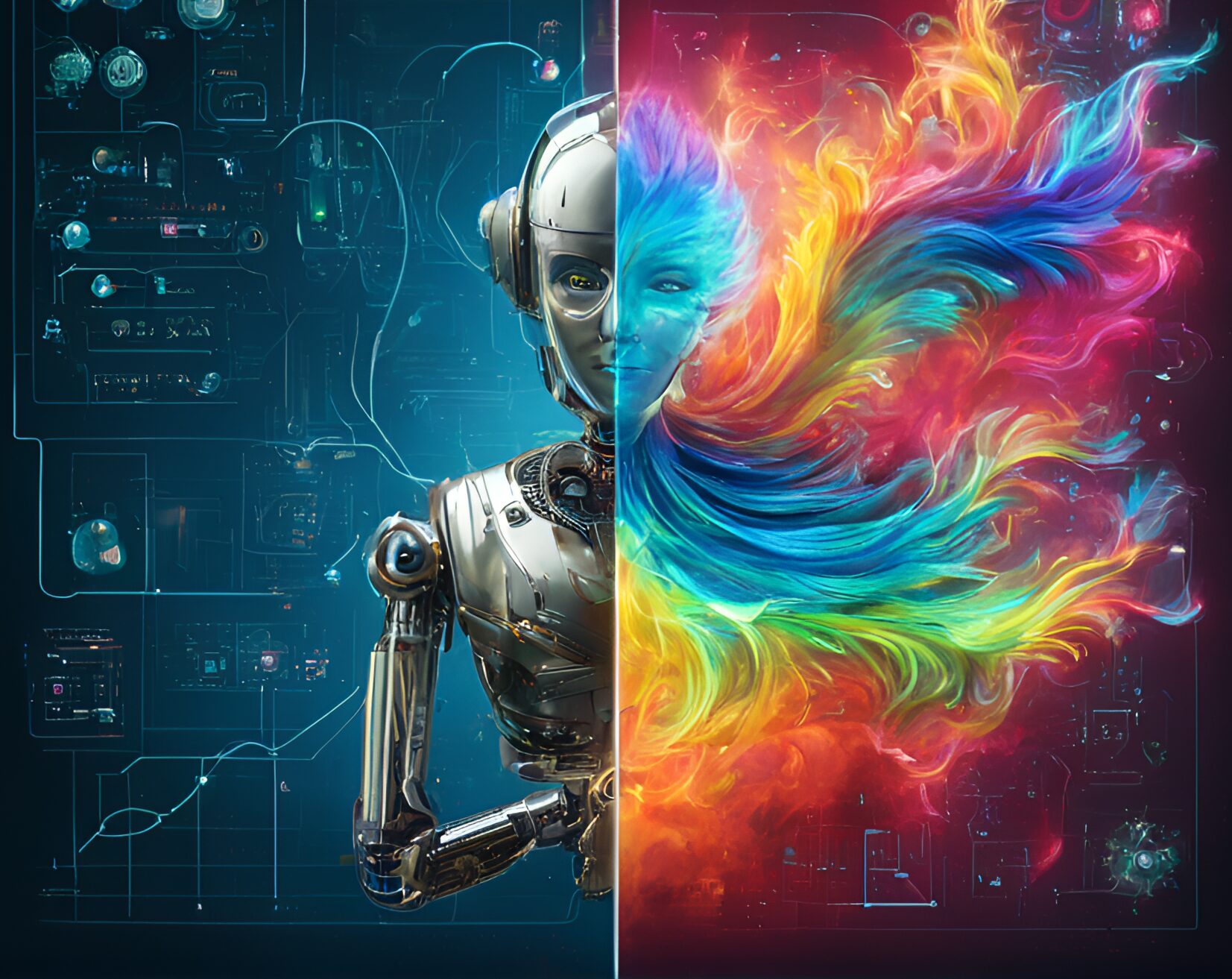Artificial Intelligence (AI) has been a constantly evolving field, with new discoveries and advances emerging every day. Two main categories, Traditional AI and Generative AI, represent different approaches and capabilities. While traditional AI focuses on analyzing existing data to make decisions, generative AI goes further, creating new original content.
Traditional AI: Masters of Analysis
Traditional AI, also known as symbolic AI or rule-based AI, operates on the basis of pre-programmed algorithms and existing data sets. It excels at tasks such as:
- Classification: Categorize data into predefined groups, such as identifying spam emails.
- Regression: Predicting numerical values, such as the price of a property.
- Clustering: Grouping similar data, such as segmenting customers based on their buying habits.
Imagine a traditional AI system as an experienced librarian. He can browse through a vast archive of books (data) and find specific information based on your instructions. However, this librarian cannot write a new book.
Generative AI: The Innovative Creators
Generative AI, on the other hand, is like a talented author. It learns patterns and structures from existing data and uses them to generate new original content, such as:
- Text: Articles, poems, scripts, programming code.
- Images: Paintings, photographs, logos, designs.
- Music: Melodies, harmonies, soundtracks.
- Videos: Animations, interpolated videos.
- Codes: In practically all programming languages
This ability to create opens up a range of possibilities in various areas, such as:
- Art and Entertainment: Creation of unique works of art, character development and innovative scripts.
- Marketing and Advertising: Generation of customized content, logo design and advertising campaigns.
- Education: Creation of customized teaching materials, development of simulations and educational games.
By the way, I recommend you check out a template created by @Rica to generate use cases for each position, area and industry. #ficaadica
The Future of AI: Powerful Collaboration
Although distinct, traditional AI and generative AI are not mutually exclusive. They can work together to create even more powerful solutions. For example, traditional AI can be used to analyze large data sets and identify patterns, which can then be used by generative AI to create new, more accurate and relevant content.
As AI continues to evolve, we can expect an even greater fusion between these two approaches, paving the way for a new era of innovation and creativity in many areas.
Let's now understand some classic differences between Traditional AI and Generative AI.
1. Problem-Based vs Project-Based Approach
Traditional AI is typically developed on the basis of specific projects. Each implementation is a targeted effort, such as classifying a data set into clusters. In contrast, generative AI takes a problem-based approach, allowing it to solve a wide range of everyday issues efficiently and continuously. After all, our lives and businesses are a series of problems of varying sizes, and generative AI is prepared to tackle them head on.
2. Daily vs. sporadic use
While traditional AI is used sporadically, in specific projects with a defined beginning and end, generative AI is designed for everyday use. Imagine having a powerful tool available on a daily basis, capable of helping with tasks from content creation to strategic decision-making. This turns AI into a constant partner, not just a one-off solution.
3. Individual vs. collective use
Traditional AI often requires the collaboration of entire teams to develop and implement. Generative AI, on the other hand, is designed for individual use, functioning as a new personal computer for each employee. This democratizes access to artificial intelligence, allowing every person in your company to have a personal AI assistant at their fingertips.
4. Structured Data Independence
Traditional AI depends on organized databases and rigorous ETL (Extract, Transform and Load) processes and data warehouses. Generative AI, on the other hand, does not require these infrastructures. It can be used flexibly, without the need for pre-structured data, allowing it to be implemented quickly and adapted to the user's needs.
5. Implementation and Immediate Results
Traditional AIs are usually developed through proofs of concept (POC) and require months of evaluation and adjustments to achieve success, a process that can last 6 to 12 months. Generative AI, however, offers immediate results. From the first use, any member of your team can start to see the benefits, without the need for a lengthy implementation phase.
Your competitors can quickly swallow you up
It is crucial to understand that this new technology is not just a passing fad or hype. Generative AI represents a strategic and competitive differentiator that can put your company ahead of the competition. Ignoring this trend could soon mean risking the survival of your business. This will not happen because AI competes with humans. On the contrary!
It's the human being using AI that competes with the human being who doesn't use it!
As generative AI generates an average 70% increase in human productivity(according to research by McKinsey), the impact on the revenue and growth of any business can be truly unbelievable. If your competitor realizes this before you do, there's a clear risk that very quickly you'll be watching your ship sink and not even knowing why.
Start earlier. Now, the implementer has an edge. Afterwards, perhaps the subject won't be the same.
In a nutshell
| Features | Traditional AI | Generative AI |
|---|---|---|
| Main objective | Analyze existing data | Creating new content |
| Method | Pre-programmed algorithms and rules | Neural networks and deep learning |
| Common applications | Classification, regression, clustering | Generation of text, images, music, video |
| Need a Structured Database? | Yes | No |
| What kind of use? | Sporadic | Everyday life |
| Suitable for? | Using a team in a project | Individual and everyday use |
| What does it help to solve? | Projects | Problems |
